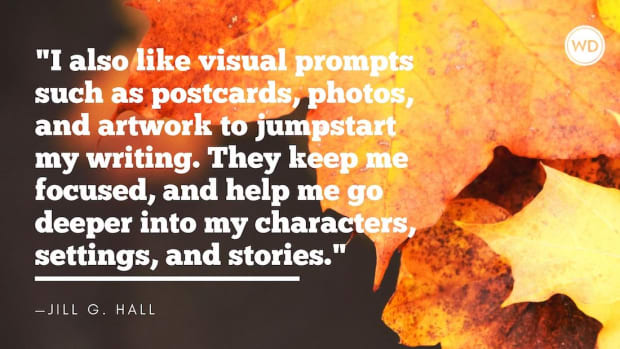Award-winning author Jill G. Hall shares her top tips for how to dive into your latest project head-first.
I didn’t set out to write dual-timeline novels. After leaving a twenty-year career as an educator I thought perhaps I’d write children’s books or maybe a memoir about teaching in inner-city classrooms, but that’s not what happened at all.
I began to attend a weekly drop-in group, that offered prompts with timed sessions. Writing in community helped my pen continue going even when I wanted to stop. Soon characters began to appear on the page out of nowhere. They were from the past and the present unrelated to anyone I’d ever known. They continued to show up week after week, time and again, guiding me to tell their stories. This is how my first novel originated. And that is when I first realized the power of intuitive writing: the practice of learning to trust the heart-hand connection. It means letting go of outlines, plans, and expectations and allowing the power of your intuition to guide you through the writing process. Intuitive writing is creating with your heart first, and not your mind.
(Jill G. Hall: Write With the Heart, Not the Head)
As an intuitive writer, for my first drafts, I put pen to paper and let my characters tell me where they want to go and what they want to do. When I try composing on my computer, I am tempted to make edits, fact check and then I get tangled in research weeds, which interrupts the rhythm and flow of my words.
Writing without an outline, I am compelled to keep writing to find out what happens next. I go deep into my characters with their thoughts and dialog. My characters sometimes come to me in dreams and work their way onto the page. I let them be who they want to be. I don’t try to change them if they’re too sassy, sappy, or sexy. I guess it is a type of unconditional love. The characters lead the story, not me.
After I’ve filled a few journals, I put sticky notes on pages I want to develop further and start typing. It’s not until I’ve typed up a whole draft that I develop my outline. Then on my third draft, I begin putting scenes in order, fact-checking and doing historical research to color in the stories. After I’ve made my manuscript the best it can be, I join a read and critique group facilitated by an expert novelist or hire an editor to give me feedback.

I know this technique isn’t for everyone. Each novelist needs to discover his or her own method. Intuitive writing might take longer than other approaches, but it works for me. Intuitive writing allows my characters to lead the journey. It allows me to follow my breath, fall into the zone, and lose my sense of place and time.
Seven Tips for Intuitive Writing
1. Develop a daily writing practice. We all have different learning styles and I suggest you experiment to find what works for you. I cherish mornings when the house is quiet. I never make early appointments, but rather pour a cup of Chai tea and crawl back into bed with my journal. I let myself write whatever I want: dreams, stream of consciousness thoughts, a poem inspired by the weather outside my window, or if I’m lucky, my characters are with me and show up on the page. Somedays I give myself an assignment to finish a specific scene or draft a pesky email I’d been putting off. I don’t check my phone or turn on my computer until after I’ve filled at least two pages. When I skip my writing practice, I feel off all day.
2. Try writing in community. Writing in community helps keep me going even when I want to stop or when something intimidates me. I continue to attend a weekly group where I’ve been inspired to write some of my favorite material.
3. Be open to surprises and strike when hot. When a great idea comes up, write it down right away! Most of my inspirations come to me unawares and if I don’t write them down, they slip away.
4. Claim your workspace. I type better if my desk is neat without papers and piles spread all over it. I need it to be quiet, but others are more productive with music on. I prefer a pillow beneath me and since I am short, I like a low desk.
(Common Signs You’re in Writer’s Resistance)
5. Connect with a community. Find other writers who can support you along the way and help nourish your work. Take classes and workshops and, when you’re ready, join a read and critique group. In my first typed draft, the scenes were all out of sequence and my technical skills were zilch. But the facilitator and group members were very patient and encouraged me to continue. After writing that full draft, I was able to put it in some semblance of order, and indeed, to my delight, I did have something. I joined another group, did another draft, then drafted more rewrites. Even if you live in a rural area there are now many on-line options you can join.
6. Use prompts. It might be a word, phrase, photo, piece of art, or something in nature. I also like visual prompts such as postcards, photos, and artwork to jumpstart my writing. They keep me focused, and help me go deeper into my characters, settings, and stories. Colors, textures, and details become clearer and flow onto the page with more vividness and sensory descriptions.
(10 Plot Twist Ideas and Prompts for Writers)
7. Set a timer. For me, ten and 17 minutes seem to be the magic numbers. Find yours.
My favorite sources:
Writing Down the Bones by Natalie Goldberg
A Writer’s Book of Days by Judy Reeves

Be First to Comment